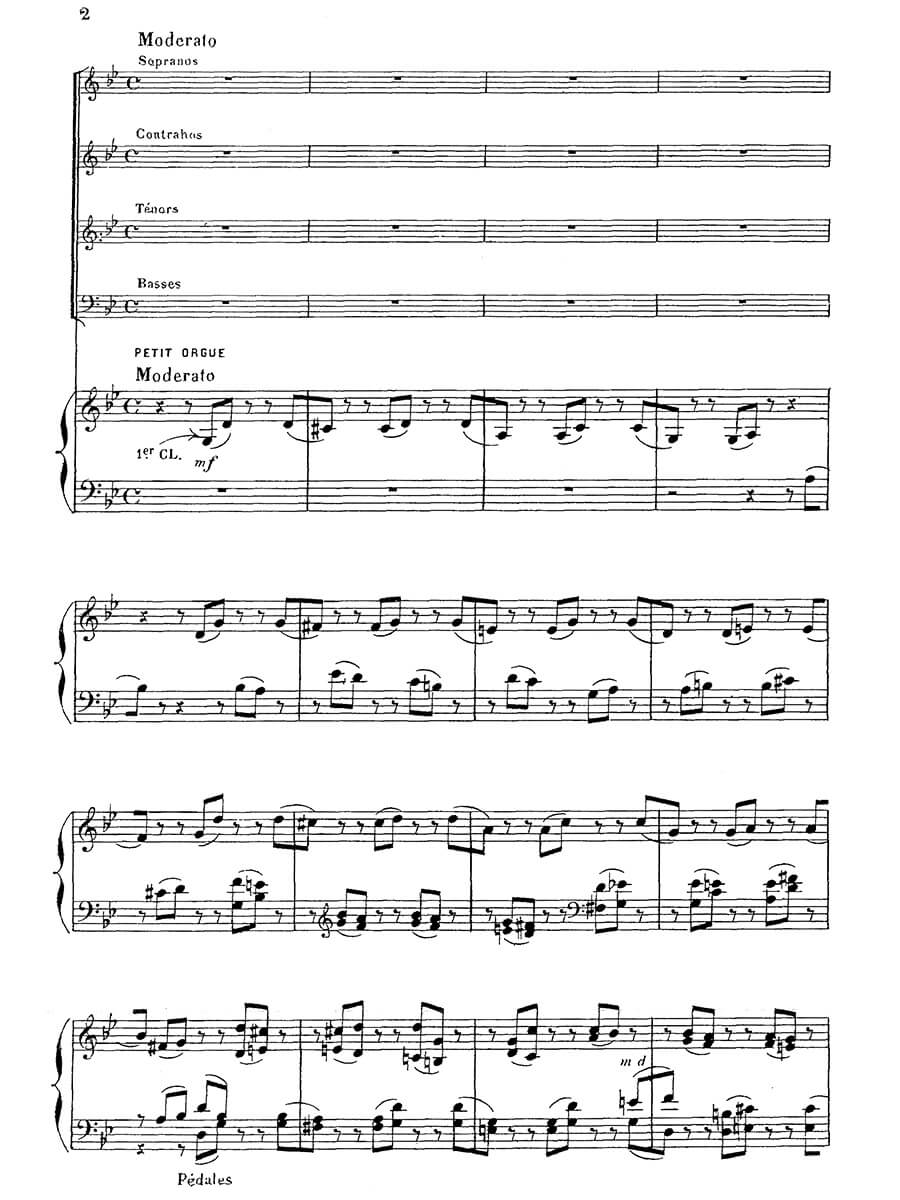Mass in G minor Op. 4 for choir and organ
Saint-Saëns, Camille
27,00 €
Preface
Camille Saint-Saëns – Mass in G minor Op. 4
(b. Paris, 9. Oct. 1835 – d. Algiers, 16. Dec. 1921)
(1856)
Foreword
Camille Saint-Saëns is best known for his contributions to the sonata, concerto, and symphony genres. Although he composed over sixty sacred vocal works, they are not as recognized as his instrumental works. Consequently, some of Saint-Saëns’s choral works have only received passing mention. However, given that Saint-Saëns began his career as a church organist, his religious music – particularly his choral works – were important for him. He composed his first sacred work, Mass in G minor Op. 4, at the age of twenty-three. The mass offers contrasting styles and timbres, creating a diversity of colors. Saint-Saëns’s admiration for the music of Bach can be heard in this work; also, his interest in improvisation. Thus, the work shows its debt to both the French and German schools. As one of Saint-Saëns’s early works, it allows exploring the composers style when he was about 20 years old. For the purpose of this foreword, I will provide brief biographical context and then focus on the Kyrie.
Saint-Saëns was born on October 9th, 1835 in Paris. He was raised by his mother and great aunt, as his father passed away two months after his birth.1 His great aunt pushed for young Saint-Saëns to take music lessons and it was soon discovered that he was a prodigy, which resulted in many comparisons with Mozart.2 Among his important organ teachers was Alexandre-Pierre Boëly, nicknamed the French Bach, who taught at the Paris Conservatoire. It was Boëly who introduced Saint-Saëns to serious organ practice and exposed him to Classical influence.3 After a couple years, Boëly lost his job and Saint-Saëns then studied under Francois Benosit, who placed a heavy emphasis on improvisation.4 In 1853, at the age of seventeen, Saint-Saëns succeeded 78-year-old Vincent-Edmond Govin as the organist of the Church of Saint-Merry.5 It was when Saint-Saëns held this position that he composed Mass Op. 4 in G minor. The mass in 1856 and the work was premiered on March 21st of that year. This mass was Saint-Saëns’s first sacred work. He dedicated it to the pastor at his current church, Abbé Gabriel. As a token of his gratitude, Gabriel sent Saint-Saëns on a trip to Italy.
In its own day, Mass Op. 4 was a fairly popular piece. On July19th, 1869, Saint-Saëns’s friend, Franz Liszt offered an encouraging response.6 Liszt compared the mass to a “magnificent gothic cathedral” and compared his techniques to Bach’s.7 However, Liszt did suggest a major cut in the unusually long Kyrie.8 Approximately fifty years later, Louis Vierne, the church organist at Notre Dame de Paris, stated that the cut in the Kyrie had become standard. Vierne, like Liszt, also pointed out influences of Bach, such as the use of counterpoint. Vierne compared the piece to Bach’s “Against the old O Salutaris of Duguet.”9
Few musicologists have delved into the mass and studied it in detail, given its reputation as an early choral piece. Donna M. Di Grazia, in her book Nineteenth Century Choral Music, expanded slightly on the mass. She regarded Mass Op. 4 as “serious in expression and devoid of sentimentality” and observed that the piece uses the cantus firmus technique in the Kyrie.
Full preface / Komplettes Vorwort > HERE
Score Data
| Edition | Repertoire Explorer |
|---|---|
| Genre | Choir/Voice & Instrument(s) |
| Size | 210 x 297 mm |
| Printing | Reprint |
| Pages | 90 |
